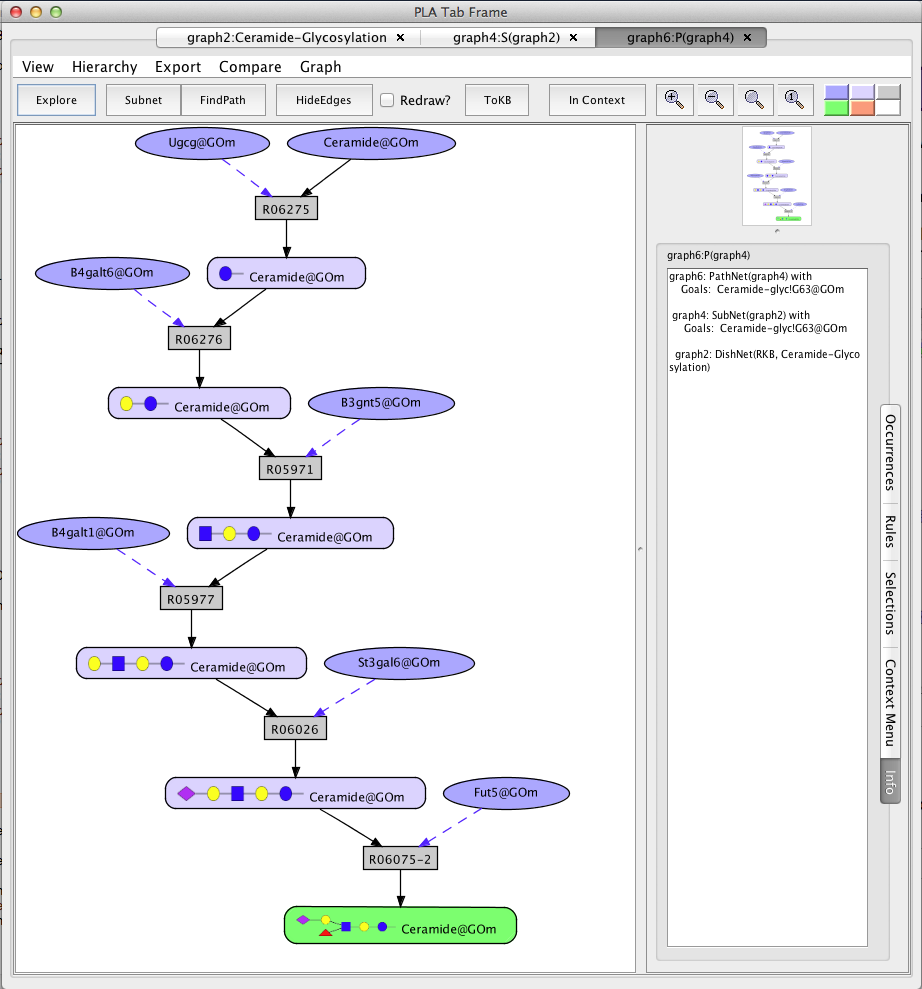Demo 3: How is CD15 antigen assembled on Ceramide?
Background:
CD15, also known as Siayl Lewis X, is a polysaccharide antigen expressed on glycolipids and many cell-surface glycoproteins. It is displayed on the surface of a cell and plays a vital role in cell-to-cell recognition processes. It is the ligand for selectins that bind leukocyte and endothelial cells [PMID:7537307] and has been shown to be the major carbohydrate ligand for human sperm-egg binding [PMID:21852454].
CD15 has the label "Ceramide-glyc!G63" and is displayed in this model as:

Load the map:
Click on Select Dish in the KB Manager.
Click on PreDefined in the pull down menu.
Click on Ceramide-Glycosylation.
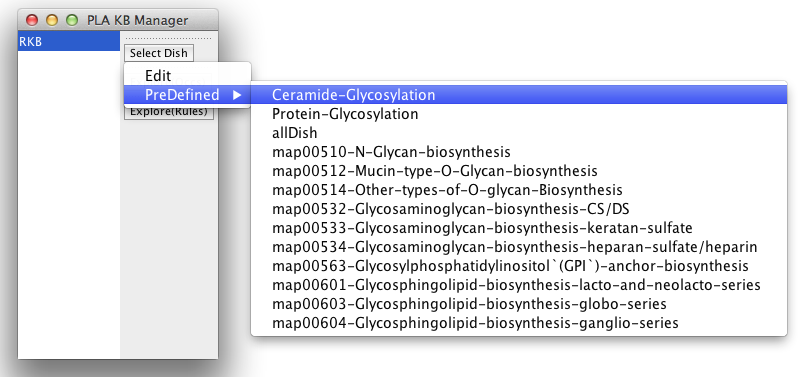
Find CD15 antigen in the network:
Type Ceramide-glyc!G63 in the Find Occurrence Window in the Occurrences tab in the Information Panel.
Click on Tab until Ceramide-glyc!G63 is highlighed.
Click on Find button - occurence node Ceramide-glyc!G63 is centered and circled in red.
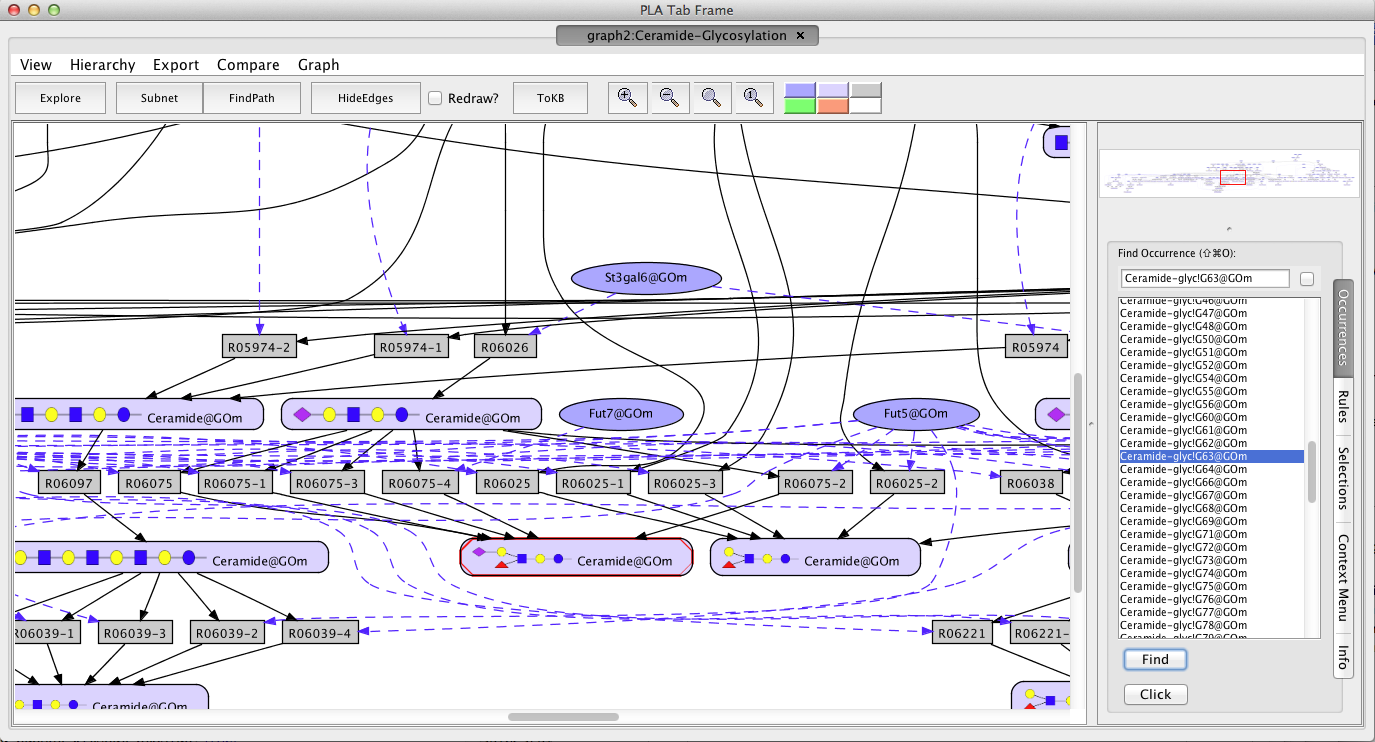
Choose Ceramide-glyc!G63 as a goal:
Click on the highlighted oval in the Graph Panel.
Click on the Make occ a goal button in the Information Panel - the occurrence will turn green.
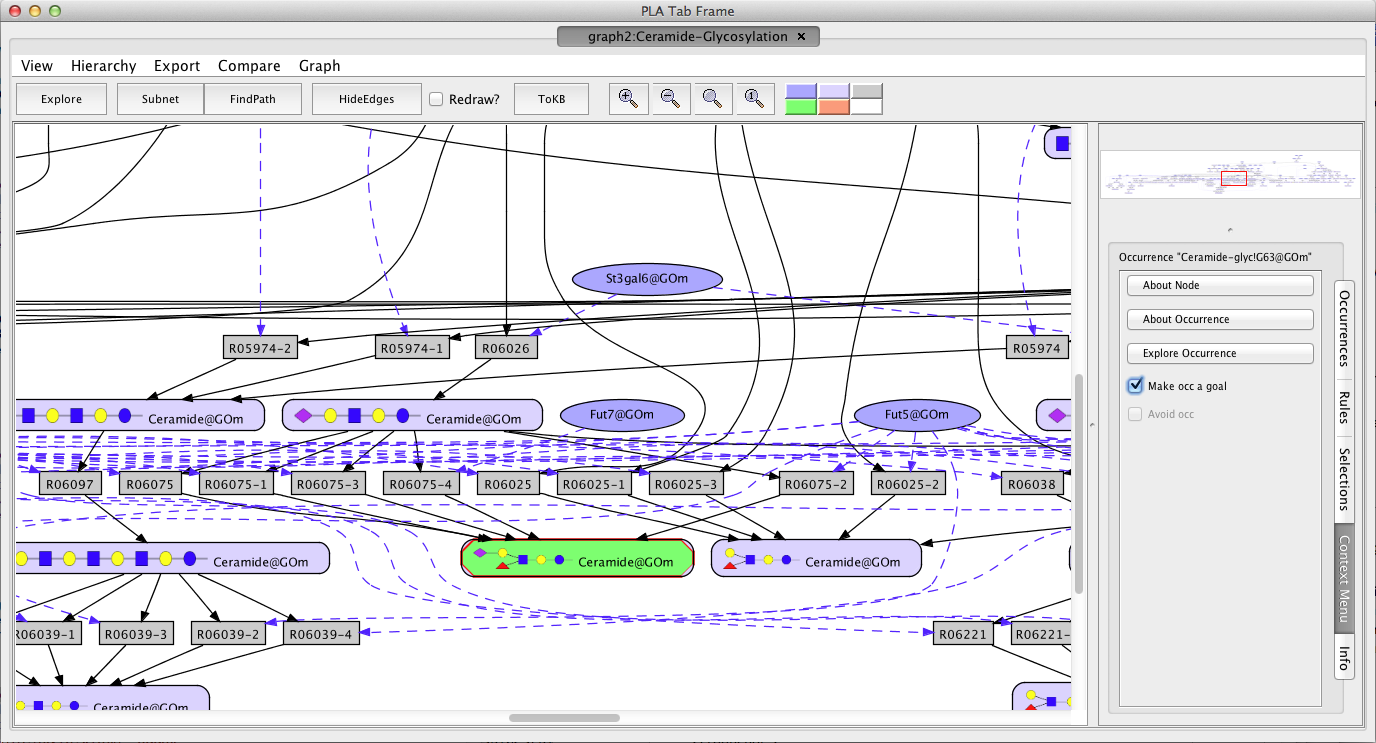
Create a Subnet with CD15 as a goal:
Click on Subnet button in the Tool Bar - a new Tab with a new graph will appear.
The new graph shows all the ways that Ceramide can be glycosylated with the sugar portion of CD15. Note that there are four enzymes (B4galt1-4) that can add Gal to the partially assembled glycan chain in rule R05977 and five enzymes (Fut3-7) that can add the final Fuc in rule R06075.
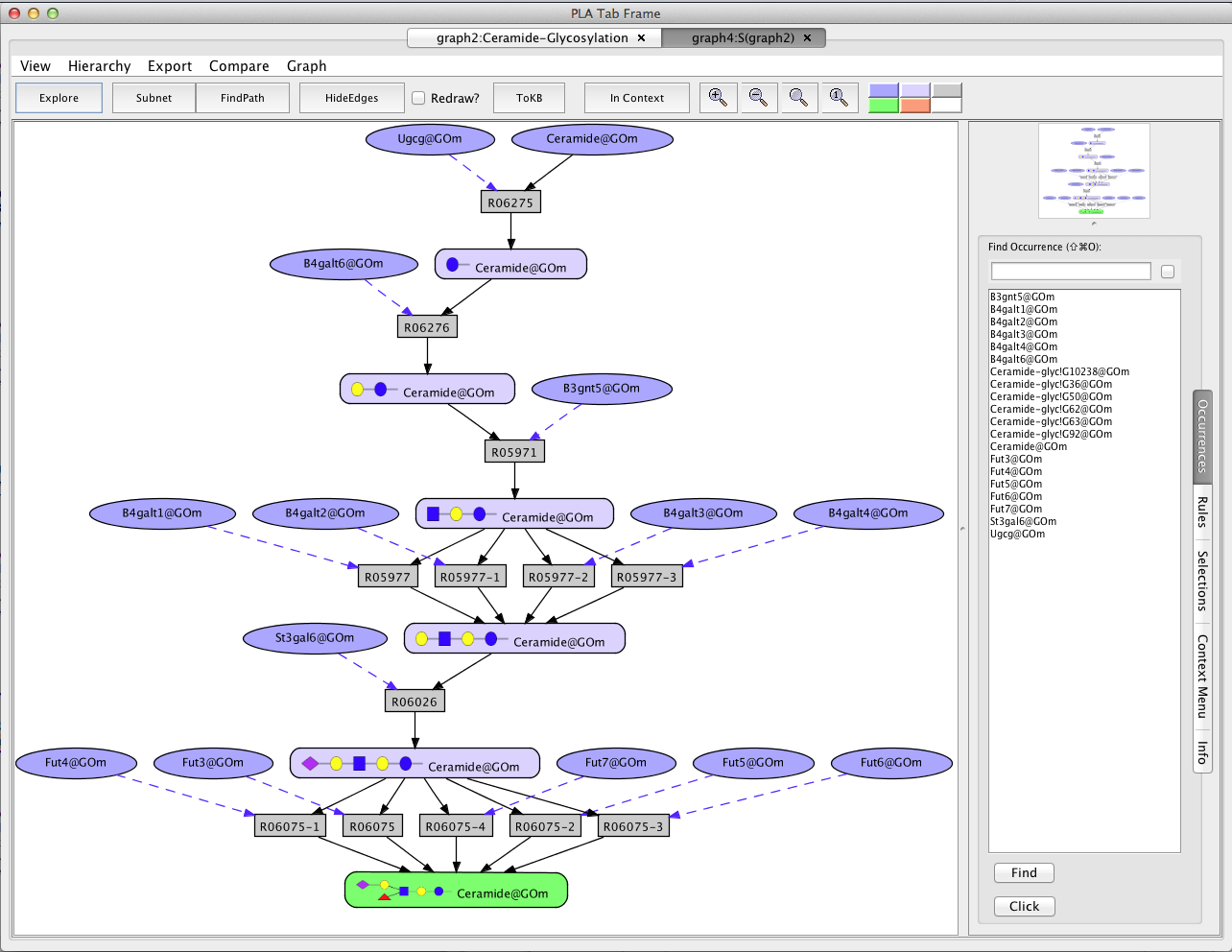
Find a single path to CD15:
Click on FindPath button in the Tool Bar - a new Tab with a new graph will appear.
The PLA viewer has randomly chosen one enzyme for each reaction showing one of possible ways that Ceramide is glycosylated to make CD15.
